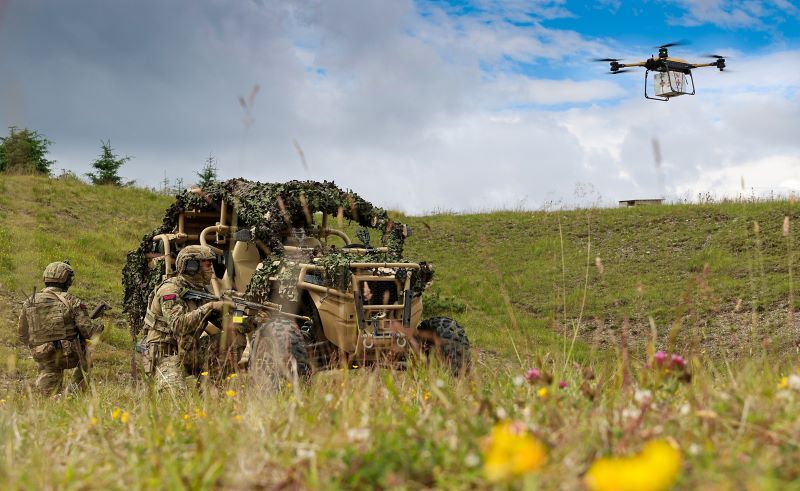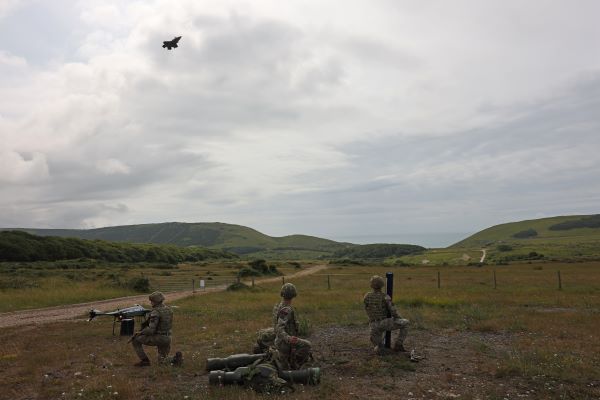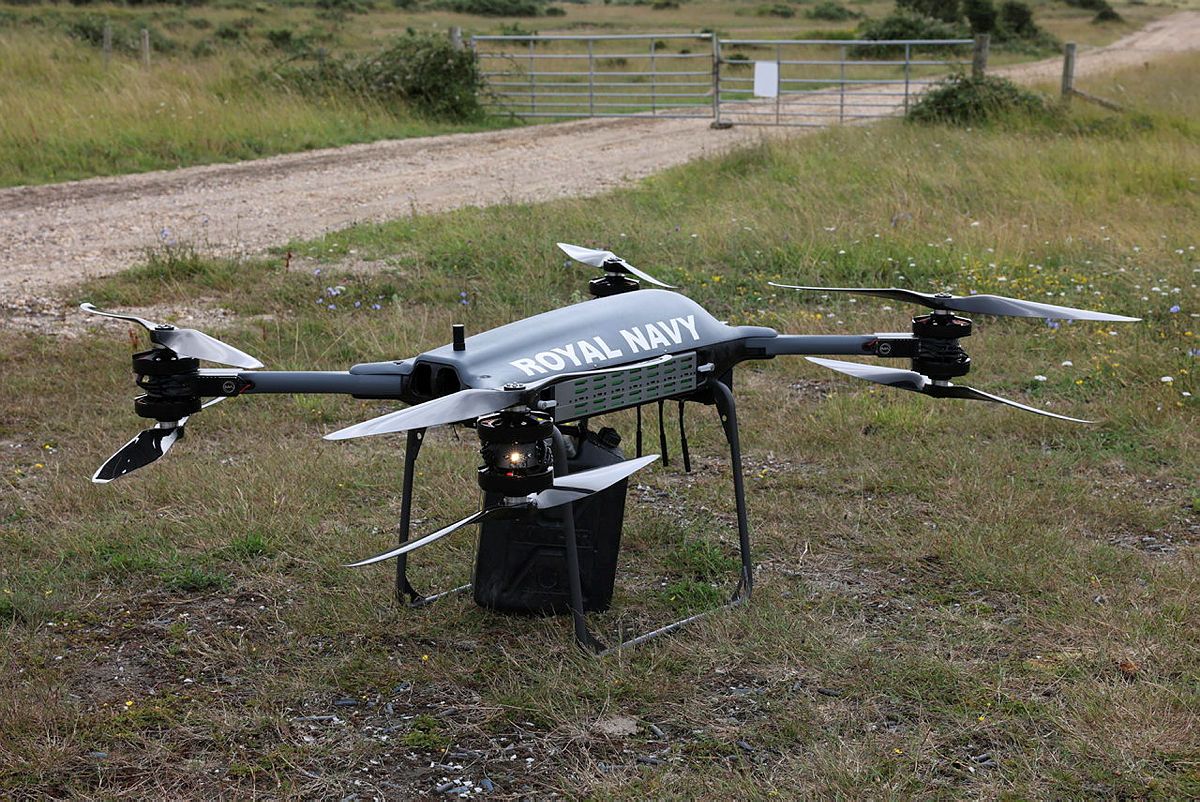Exclusive: Head of UK MoD’s FCI outlines plans, support for industry
- Europe
- Feature
- Budget
- Joint

The UK is undergoing a period of rearmament, with SMEs key to supporting this effort. DSEI speaks with the head of the UK MoD’s FCI to explore its purpose and ascertain its plans for supporting industry and bolstering the military.
The UK is undergoing a period of rearmament, with defence spending set to increase to 2.5% of GDP by 2027.
Ensuring a secure, resilient supply chain by investing in UK-based companies, including small and medium-sized enterprises (SMEs), is key to supporting this. Especially since these entities often develop some of the most technologically advanced capabilities.
Supporting this agenda is the UK’s Defence Equipment & Support’s (DE&S) Future Capability Innovation (FCI), which explores and accelerates innovative technology, including from SMEs, into operational use, James Gavin the head of FCI told DSEI in March.
“We bridge the infamous valley of death”, Gavin said.
Originally called Future Capability Group, FCI changed to reflect its expanding role, which now encompasses other teams within DE&S that similarly explore and accelerate future novel technology.
FCI’s remit is broad, spanning everything from de-risking concepts to trialling experimental novel capabilities such as uncrewed ground vehicles and drones for the frontline commands (FLCs). The organisation also buys and develops new equipment for Ukraine.
FCI sits within DE&S, the UK Ministry of Defence’s (MoD’s) procurement arm. Traditionally, DE&S was split into four operating domains – air, land, ships, and strategic enablers – as well as various supporting elements. With more than four entry points for the FLCs on their capability asks, this proved inefficient, Gavin acknowledged.
To expediate acquisitions and improve productivity and efficiency, DE&S has now been split into four – Corporate; System Integration; Gateway; and Core.
“No doubt this could lead to some initial frustration” for some stakeholders, given the change in DE&S’s acquisition approach, but it will help the MoD to “prioritise better”.
Core is the “powerhouse of DE&S”, Gavin highlighted. All the delivery teams operate here, which deliver the defence programmes of record.
“The way into those delivery teams…is the Gateway”. FCI sits within this Gateway, to be “forward leaning with the frontline commands”. Here, in DE&S’ new “front door” for armed forces and industry, FCI explores and tests new rapid capabilities and novel ways of working, before spinning them into Core.
Gateway includes a number of different teams that engage with FLC customers to set the right requirements and priorities from the outset of a programme or project.
How can SMEs get involved?
Companies can get involved with FCI through two mechanisms.
The first is through the MoD Defence Sourcing Portal (DSP), where most competitions are published, including for the Drone Capability Coalition – an initiative which sources and acquires equipment for Ukraine.
International companies can also apply for competitions through DSP, Gavin explained, but recently UK SMEs have been winning most of the work FCI has been working on. In part this is because they can respond to the short timescales, are not encumbered by large company processes, and because they focus on answering the questions posed. Many large companies tend to try and repurpose what they already have, which often wastes “everyone’s time during the bidding process”, he added.
The other mechanism is through commercial frameworks. These are typically thematic based, with relevant companies able to apply to join, via the DSP initially. Following successful evaluation, the MoD can then use the framework to quickly develop, discover and procure suitable equipment.
This is a “much faster process” than traditional procurement methods, which can often take more than a month to contract, rather than days, Gavin explained.
Frameworks are reopened every six months or so to allow new companies to join.
Commercial frameworks include Human Machine Teaming (HMT), Heavy Lift Challenge (HLC), and Multi-Domain Integrated Swarm (MDIS). These are likely to be replaced as the Strategic Defence Review (SDR) creates new areas to focus on.

The Royal Marines with a Malloy Aeronautics Heavy Lift drone and an F-35B aircraft flying overhead during a multi-domain exercise at Lulworth Range. (Cpl Tim Hammond/UK MOD © Crown copyright 2023)
Along with these mechanisms, SMEs can get involved with supporting Ukraine through the UK’s Taskforce Hirst, facilitated by DE&S.
Primarily focused on support, such as maintenance, repair and overhaul (MRO), Taskforce Hirst is actively encouraging SMEs to get engaged with Ukraine to understand the military’s requirements and refine their equipment while also helping to provide direct value to the country, Gavin explained. In return, the MoD are seeing Ukrainian companies also coming to the UK where they are setting up businesses.
In addition, some SMEs are taking it upon themselves to go voluntarily.
Uncrewed systems a priority
SMEs have been most active in supporting FCI as it explores and accelerates uncrewed systems into service. These systems remain essential to the organisation's ongoing efforts.
“This is a really big focus, [with] real growth”, Gavin said, when asked about which area his department needs SMEs most.
He pointed to the half a billion UK pounds allocated for Ukraine this year alone on uncrewed systems. “This amount could actually double next UK financial year, as we still need to continue arming Ukraine”.
“We think we'll see a continued need to experiment, explore and accelerate operations [with uncrewed systems], not just for Ukraine, but the MoD [and FLCs]”.
Previous experimental FCI uncrewed programmes include the Heavy Lift Challenge programme conducted alongside and for the Royal Navy. This involved funding the development of, and trialling heavy-lift drones, including vertical take-off and landing (VTOL) systems, to assess the equipment’s ability to deliver supplies and equipment at sea. These included platforms from Malloy Aeronautics and Windracer Autonomous Systems.

Malloy Aeronautics Heavy Lift Drone being tested with the Royal Navy. (Cpl Tim Hammond/UK MOD © Crown copyright 2023)
The MoD anticipates scaling out this experimental VTOL systems into a formal programme of record and accelerating the adoption of heavy-lift UAS across the force, Gavin said.
The British Army is also expected to run a programme for the large-scale acquisition of small UAS for a variety of missions.
These programmes are, however, subject to contract and dependent on the UK’s SDR – expected in Spring, Gavin acknowledged.
Using the commercial frameworks, FCI also plans on launching a first-person view (FPV) drone competition this year under the HMT framework, “to really build on what we've been buying for the Ukraine, but focused on the British Army’s needs”.
This, however, depends on the army’s plans, he said, adding that the competition will likely begin this financial year. There will be a focus on Sovereign UK and ‘landed’ UK companies, to ensure a resilient UK supply chain, and to align with the emerging industrial strategy to create UK jobs, he added.
The aim of this new FPV project is likely to be to fund a supplier iteratively, as has been the case with Malloy Aeronautics. This allows the supplier to consistently improve its product based on feedback from military users and the frontline, Gavin explained.
The MoD is “at the cutting edge of applying these acquisition models” across Europe, he emphasised.
One-way strike drones, or what Gavin calls one-way effectors, is another area of particular interest. Project Brakestop is an example of this effort, which is pioneering the development of these systems, he said, adding that cheap critical mass is “very much the drive” for this project.
Project Brakestop, launched in September 2024, seeks a one-way effector launched from a mobile ground-based platform that has a range exceeding 500km. Each unit must cost no more than GBP400,000.
The MoD intends to further explore these systems and its capabilities under a new, large one-way effector programme to “really push some boundaries”, Gavin said. The programme, run on behalf of the army, will comprise many different projects covering various specifications and ranges. The UK supply chain will be central to this.
Uncrewed systems are now an essential element of a military’s arsenal, as highlighted by the war in Ukraine. Gavin explains that the army views UAS and one-way effectors holistically. These systems should be deployed across all different levels, from core, division and brigade level, with different ranges and payloads being a factor here. So, a one-way effector with a 40kg payload should be capable of reaching a 400km range, which is a more strategic system, while a UAS with a 10kg payload may only reach ranges of around 100km.
New mortar competition expected
Along with uncrewed systems, the MoD plans on launching a new light vehicle-based mortar competition this year in a bid to bolster its land force’s mobile artillery capabilities.
Expected to go live in mid-2025, the project seeks to integrate a 120mm mortar onto an in-service light mobility vehicle, such as those manufactured by Supacat, Gavin said.
The competition will be run by FCI’s Capability Acceleration Team supported by the DE&S Engineering Delivery Partner (Aurora) and Project Delivery Partner (Equinox).
The companies behind the consortia Aurora include QinetiQ, AtkinsRéalis and BMT.
Two suppliers will be selected to participate in the competitive bake-off to showcase the integration of their mortar systems on an in-service light mobility vehicle.
A batch of mortar systems will be procured to help understand their capability before full roll out, Gavin said.
Embracing agile acquisition
This mortar competition follows a new approach to acquisition Gavin called ‘off the shelf bake off’, whereby the MoD acquires commercial off the shelf equipment from a number of companies before holding a ‘bake off’ to assess the kit.
This spiral acquisition approach allows “developers to iterate and advance their kit throughout the process which also delivers faster more efficient competitions and equipment delivery”, he explained.
Also called the ‘two down to one supplier model’, this often involves acquiring higher technology readiness level (TRL) equipment, rather than the MoD funding development of new equipment.
This could, however, reduce SME involvement, since these companies often initially have lower TRL technology which requires MoD funding to grow it further.
Gavin recognised that this might be the case, although he acknowledged that some projects still require lower TRL kit. In this case, the MoD uses the more traditional 3-2-1 acquisition model, where SMEs often perform better.
Under this model the MoD funds three companies to develop capabilities to a minimum viable product, then down selects the best two to develop to a minimum deployable capability, before selecting one company for scaled production and continued spiral development.
Aside from mortars and uncrewed systems, the MoD is interested in exploring hypersonics, subject to the SDR.
Enjoy reading this article? Click here to read more about our upcoming DSEI membership offering...
Tags
- accelerator
- acquisition
- capability
- companies
- competition
- defence
- des
- effort
- equipment
- exclusive
- explore
- fci
- gavin
- head
- industry
- key
- mod
- mods
- more
- mortar
- new
- olivia
- outlines
- period
- plans
- programme
- rearmament
- savage
- smes
- speaks
- support
- supporting
- systems
- uk
- ukraine
- uncrewed
- undergoing
Providing impartial insights and news on defence, focusing on actionable opportunities.
-
Featured New
Exclusive: Head of UK MoD’s FCI outlines plans, support for industry
28 Apr 2025 Olivia SavageThe UK is undergoing a period of rearmament, with SMEs key to supporting this effort. DSEI speaks with the head of the UK MoD’s FCI to explore its purpose and ascertain its plans for supporting indust ... -
Featured New
Feature: Ukraine’s Brave1 highlights progress, invites collaboration
28 Apr 2025 Benjamin HoweFounded two years ago, Ukraine’s defence accelerator Brave1 has become a key player in supporting Ukraine’s war effort. DSEI speaks to the CEO about its achievements and roadmap for the future. -
New
EDA consults industry partners ahead of EUR1.6m quantum technology tender
28 Apr 2025 Benjamin HoweThe tender seeks support in drafting a new defence quantum plan, following years of preparation from the EU to facilitate quantum innovation.


)
)
)